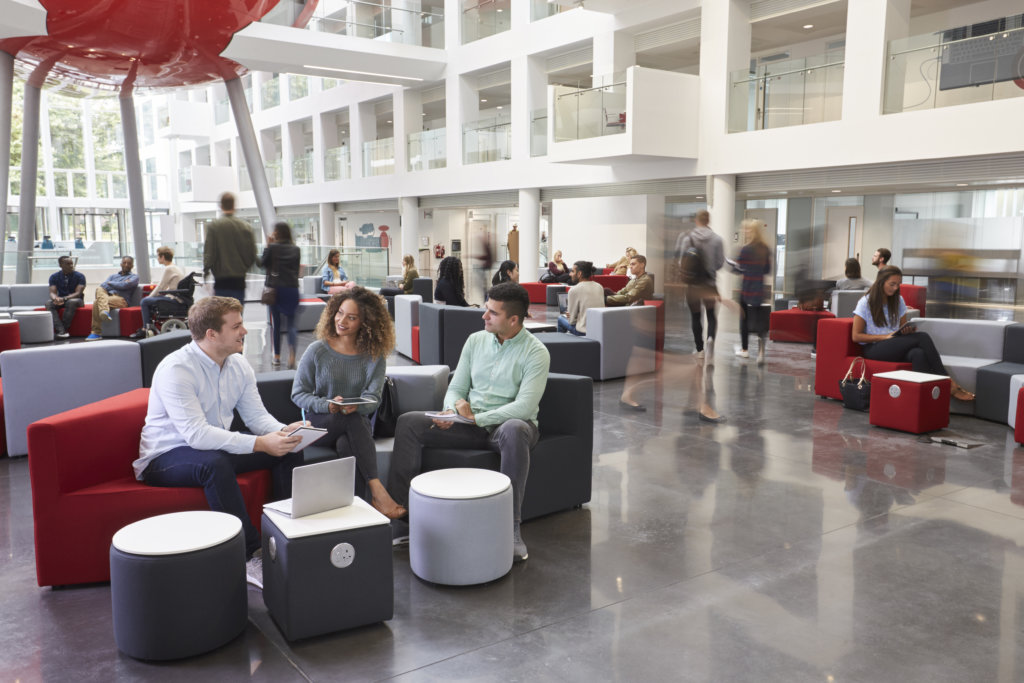
In the transportation world, communities everywhere are upgrading road systems to prepare for the driverless revolution, reduce congestion, speed up overall traffic flow and increase capacity – much of it driven by population increases and the anticipated arrival of connected vehicles. Urban planners are required to update their back-end communication and signal control systems and widen streets or add new road connections to accommodate growth.
In the digital networking world, it’s no different – especially for data- and device-hungry educational institutions – which are trying to stay ahead of the ongoing digital transformation.
With more and more devices per user, integration of IoT devices, and the ever-increasing demand for digital content for personal and academic consumptions, universities are under immense pressure to deliver best-possible digital experiences to remain competitive.
When my son started university a few years ago, he brought along his laptop, mobile phone, printer, game console and wireless router to ensure his digital needs where met upon arrival in his dorm. The current cohort is adding eReaders, smart watches, health trackers, connected TVs, wireless speakers and tablets, among other items. What started out with two or three devices per student has quickly ballooned to estimates of an average of eight or nine devices today.
Mickey Slimp, executive director of the Northeast Texas Consortium of Colleges & Universities and co-author of How the Internet of Things Is Changing Our Colleges, Our Classrooms, and Our Students notes in WCET Frontiers: “Today’s student does not believe that he or she should have to ask for enough Wi-Fi to do whatever he or she wants. Students simply expect it to be there. With the emerging Internet of Things and personal demands for Internet-based entertainment, the need for faster connection speeds has exploded.”
Wi-Fi 6 will be the standard expectation for many wireless refresh projects
Until now, 802.11ac (Wi-Fi 5) capabilities have been sufficient for most educational use cases but the technology needs to evolve to keep up with future demands. Development of the 802.11ac standards started in 2008 (a year after the first iPhone was released) and IEEE specifications where published in 2013 (when iPhone 5 was released). Much has changed since then and universities need to plan for the coming decade and the influx of progressively more connections from a broad variety of devices. The 802.11ax standard is expected to be ratified by the IEEE at the end of this year and universities are noticing the first wave of Wi-Fi 6 devices entering the campus.
According to recent research by IDC, by 2025, more than 150 billion devices across the globe will be connected, and of those nearly half will be IoT devices. This development, which will impact educational institutions as much or more than other industries, means greater stress on university IT departments and it requires proactive planning for network infrastructures, administrative management capabilities, and privacy/security policy implementations.
There are certain areas within educational institutions which are already experiencing bottlenecks. Student dormitories and large lecture halls are just a couple of the more populous areas where device access can be challenging and lack of connectivity could be perceived negatively when resulting in non-ideal living and learning environments. The always-on expectations will only rise.
So what can universities do to ensure to stay ahead?
Since students expect that Wi-Fi should be free and everywhere, colleges and universities are evaluating to add capacity to areas once considered unnecessary or secondary. Public venues, especially sports stadiums, cafeterias and outdoor spaces between buildings previously considered “non-academic” are now added to the list of essential coverage points to deliver consistent experiences.
“As we survey today’s higher education landscape, we are struck by how Wi-Fi and connectivity has rapidly emerged as the lynchpin for student engagement, satisfaction and success. More universities are responding to a new generation of students prioritizing robust and ubiquitous Wi-Fi and connectivity as an important criterion for their college decision,” said Mary DeNiro, CEO and executive director, Association of College and University Housing Officers-International in the 7th annual ResNet study (2018).
To ensure wireless coverage everywhere, especially for the incoming class of 2023 this fall, universities looking to upgrade and increase coverage need to start reviewing and testing Wi-Fi 6, the next generation of networking. Designed for the most demanding environments like universities and stadiums, Wi-Fi 6 delivers a better user experience for everyone.
The transition has already begun
One example is the University of Minnesota with 48,000 students, 18,000 faculty and staff, and over 120,000 device connections on its network daily.
“As we prepare for the introduction of 802.11ax devices on campus, we need to understand the impact of the additional traffic and device density to the infrastructure and IT staff,” said Louis Hammond, service owner for data and voice network services for the University of Minnesota. “Testing Aruba’s 802.11ax APs will help determine how to best integrate ax with our current system while improving the user experience, and look at ways to leverage Aruba’s NetInsight Green AP capabilities to potentially reduce energy usage and costs.”
Whether your IT department is just testing the waters or is planning to upgrade APs in stages, Wi-Fi 6 is promising to provide better experience for all users across the campus.
Learn how products that incorporate the new standard can help you meet strategic goals at your college or university.
Learn More
Aruba Wi-Fi 6 access points for the most demanding environments




